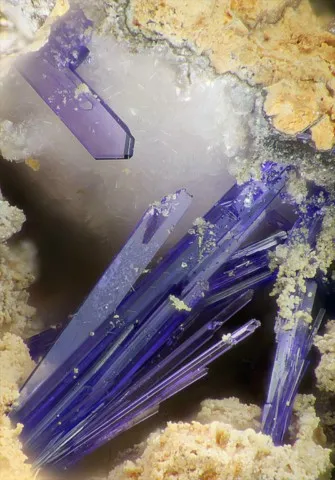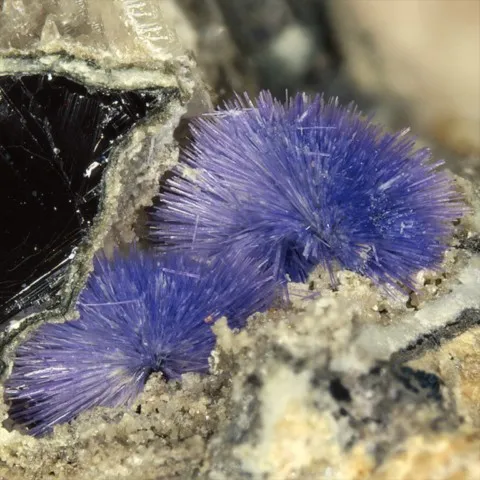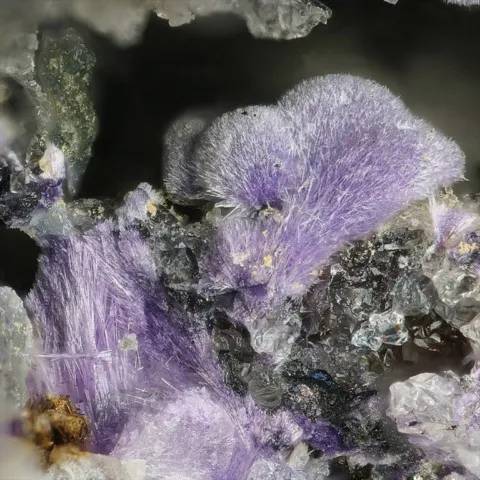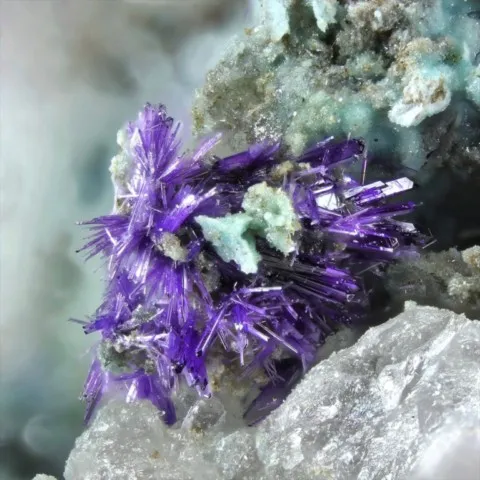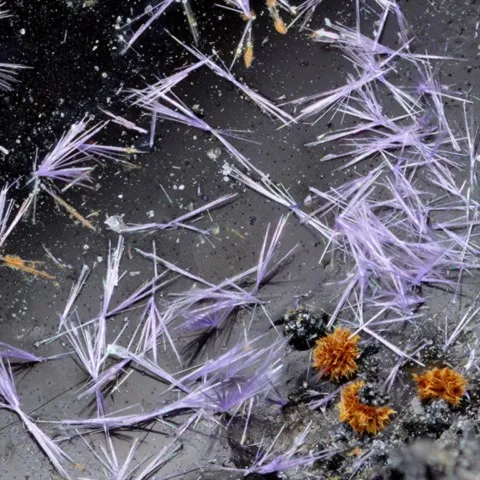ELYITE
Class : Sulfates, chromates, molybdates
Subclass : Anhydrous sulfates
Crystal system : Monoclinic
Chemistry : Pb4Cu(SO4)(OH)8
Rarity : Very rare
Elyite is a very rare lead and copper sulfate known only from the oxidation zone of a dozen polymetallic deposits. Extremely rare in its natural state, elyite is however abundant in the slag of lead foundries. Its name was given to it in honor of the important mining promoter of the 19th century : John Ely. Elyite occurs in small fibrous crystals gathered in tufts with radiate textures and in tufts of a beautiful purple color in the voids of the gossans, where it can accompany a curious earthy secondary galena.
Main photo : Elyite from Bréziès, Asprières, Aveyron, Occitanie, France © Serge Lavarde
Elyite in the World
Twinning
A twin is known by mirror on (100).
Fakes and treatments
No fake listed for this mineral species.
Hardness : 2
Density : 6
Fracture : Undetermined
Streak : Purple
TP : Transparent
RI : 1.990 to 1.994
Birefringence : 0.004
Optical character : Biaxial -
Pleochroism : Visible
Fluorescence : None
Solubility : -
Magnetism : None
Radioactivity : None

